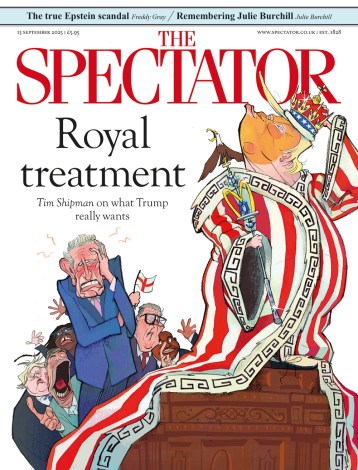In a week of solemn intonation and symbolic meaning, the sight of Sinn Féin’s leader Michelle O’Neill shaking hands with the King at Hillsborough Castle was yet another event to be dissected and extrapolated.
Hushed tones providing narration from London fell over themselves to stress the meaning of this and repeated the article of faith: ‘How far we’ve come’. From the BBC to Sky, and even GB News, broadcasters were united on that front in their commentary.
Others, especially those outriders for the so-called ‘New Ireland’ which would appear following any border poll, pointed triumphantly. This gesture showed that unionists had nothing to fear and that their traditions would be accommodated.
Sinn Féin will no doubt have concluded they had yet another good day under their softer, PR-savvy leadership. Who knew being reasonable to a grieving son was such a quantum leap of magnanimity and decency?
Who knew being reasonable to a grieving son was such a quantum leap of magnanimity and decency?
The perceived wisdom in the past 24 hours is that in the never-ending quest to deliver an Irish republic, this was yet another game changer. After all, how could a wavering unionist not be swayed by such a gesture and fail to give them a fair hearing?
For all that Sinn Féin have ensured, through their customary message discipline, that the top of the party haven’t put a foot wrong this week, elements of the rank and file of nationalism and republicanism have not.
From appalling chants about the Queen at a Dublin football match to similar, unsavoury chanting in a County Down bar, the notion that the wellspring of hostility towards Ulster’s unionists from some of those who would be their alleged compatriots is running dry is blatantly false.
The sycophantic coverage of O’Neill ignores an uncomfortable truth: only earlier this year, she said that there was no alternative to IRA terrorism during the Troubles.
Presumably before her advisors clocked it wasn’t the sort of look they were going for, O’Neill would frequently tweet or air praise of dead IRA men; one deemed worthy of remembrance by O’Neill was the hunger striker Thomas McElwee, who did his bit for Irish unity by firebombing a clothes shop and killing Yvonne Dunlop, the young mother of three who was working in it at the time.
But these things have been forgotten amidst the gestures of this week. A frank admission by republicans of the futility of IRA violence would aid the pursuit of reconciliation and reunification more than any camera-friendly handshake.
Conversely, there will be those on O’Neill’s own side who will be asking what the point of years of republican activism and indeed paramilitarism was – so that a Sinn Féin leader could enter a royal palace to make pleasantries with yet another British monarch?
The pursuit of superficial reasonableness and electoral credibility has clearly shown up the sham and transparency of Sinn Féin’s manoeuvrings. A semi-competent unionist political machine should have no problem in pointing out these interlinked hypocrisies and contradictions, but that would be asking too much.
Many will have been touched by what took place at Hillsborough and the cathedral yesterday and that is their right. However, as with many of the purportedly symbolic moments in Northern Ireland’s history, much remains skin deep.






Comments